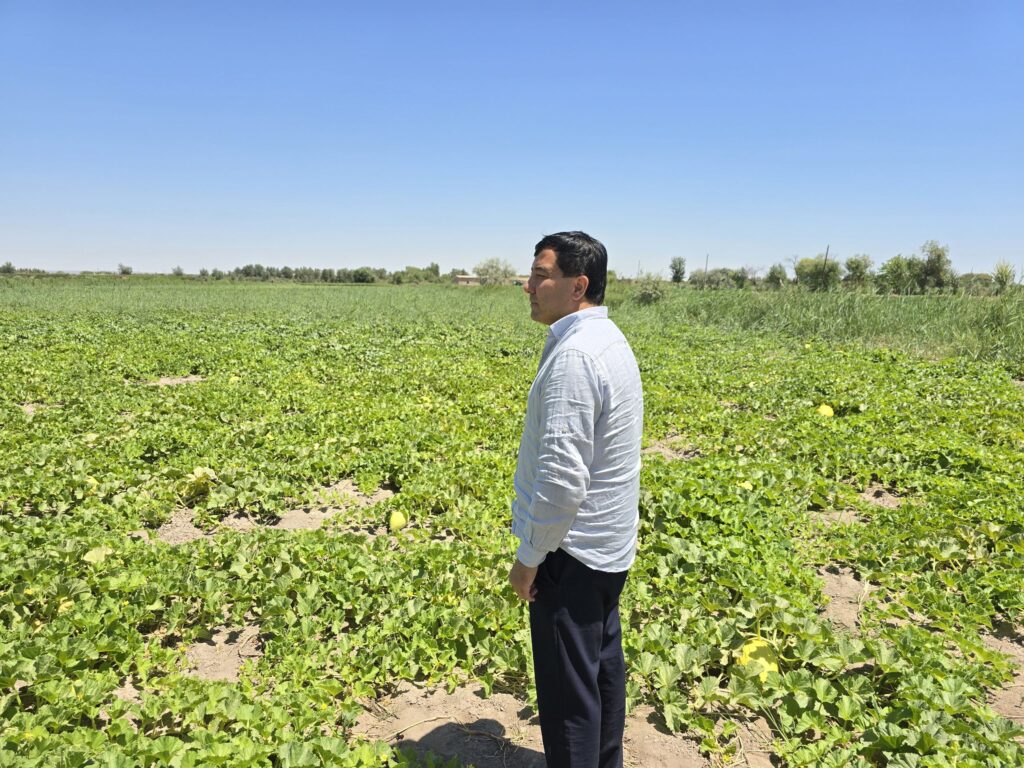
Sanat Kalandarov is a farmer and scientist from Khorezm who has devoted his life to melons.
He cultivates dozens of varieties on the saline soils along the banks of the Amu Darya, preserves rare seeds and develops new types that can last until spring. His goal is to make the Khorezm melon a recognisable export and tourism brand for Uzbekistan.
Kursiv Uzbekistan spoke with the farmer and discovered: a melon is more than just a fruit. It is science, tradition, business and a symbol of sunny Uzbekistan.
Khorezm. Early morning in the village of Vazir
A dense, sweet aroma drifts across the melon field – a sign that the fruit is nearly ripe. Amid endless rows stands one man. Sanat Kalandarov, 40, is a hereditary dehkan (farmer) and melon grower. He steps into the field before sunrise to catch the most important sign – the scent.
«If the melon smells sweet in the morning, the harvest will be good,» he says.
For Sanat, this is a lifelong calling. Since childhood, he has known the sounds of a dawn-lit field where each melon breathes in the heat of the Uzbek summer. It is in these moments that he feels his work is truly meaningful.
«My love for melons came from my grandfather. When I was a child, he would take me by the hand and bring me to the melon field. He’d pick the first ripe one himself, slice it with a knife and offer me the first taste. He’d watch as the juice ran down my cheeks and smile before cutting a piece for himself,» Sanat recalls.
Gurvak – the Juicy Brand of Khorezm
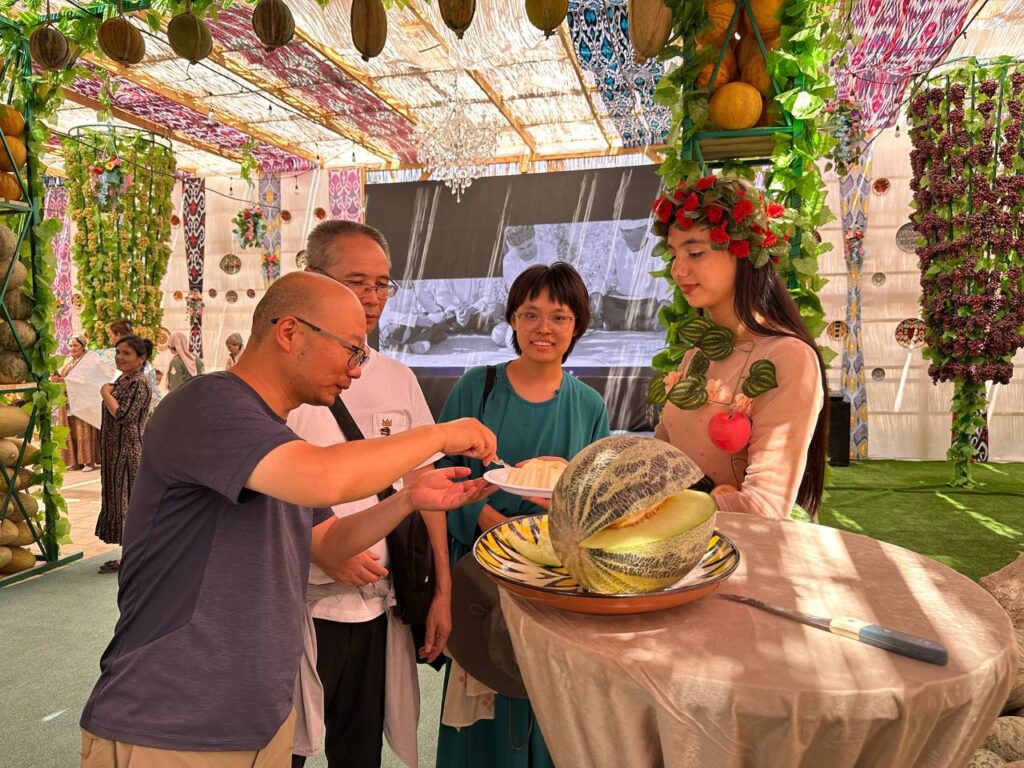
Sanat Kalandarov’s farmland lies along the Amu Darya, where the salinity is higher than in other areas. He believes this salt-rich soil makes the melons especially sweet.
Each year, Sanat cultivates around 127 varieties of melon across 50 hectares. He collects their seeds to preserve genetic diversity. His crops include early, mid-season and late-ripening varieties. Special attention is given to the gurvak variety, which he promotes as the hallmark of Khorezm and a local brand.
Gurvak ripens in early August and grows only in Khorezm. It is often called the «Khorezm brand». However, due to its short shelf life, this variety cannot be transported over long distances.
From Farmer to Creator of New Melon Varieties
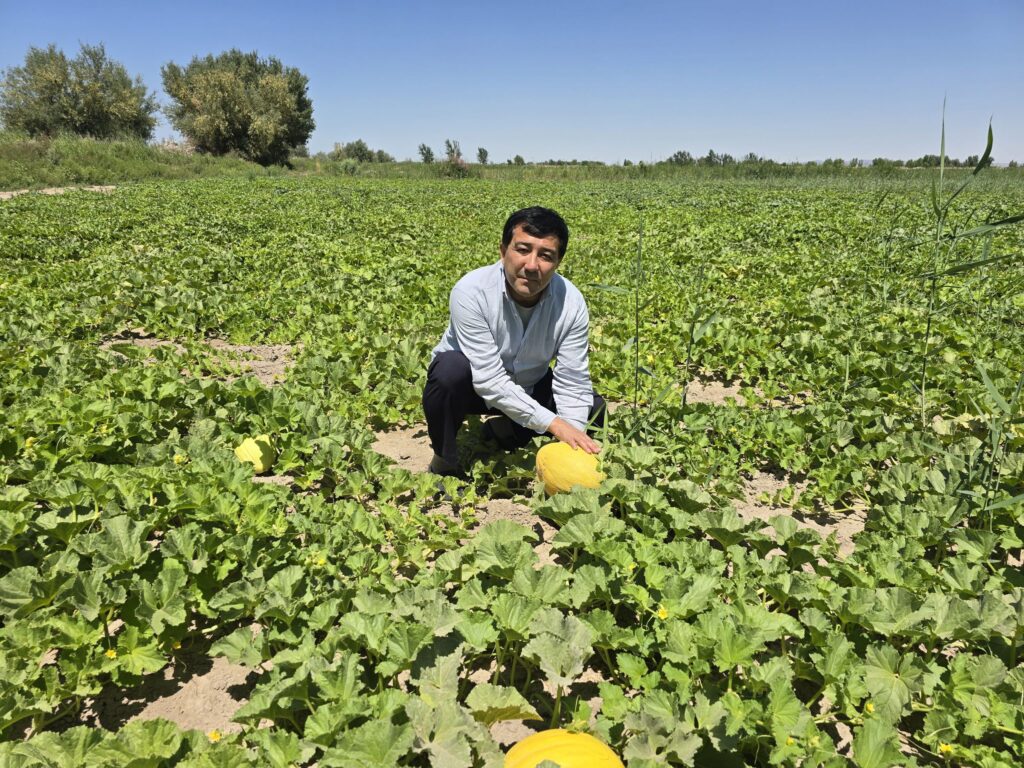
Sanat’s love for the land and melons led him to science. He wanted to understand more about melons. In 2012, he graduated from the Tashkent Agricultural University and became an agronomist. In 2019, he was appointed director of the Khorezm Research Institute of Vegetables and Potatoes.
In 2022, Sanat developed his own melon variety – Kumush («Silver»). Today, he combines the roles of farmer and scientist. This September, he will defend his doctoral dissertation on Kumush.
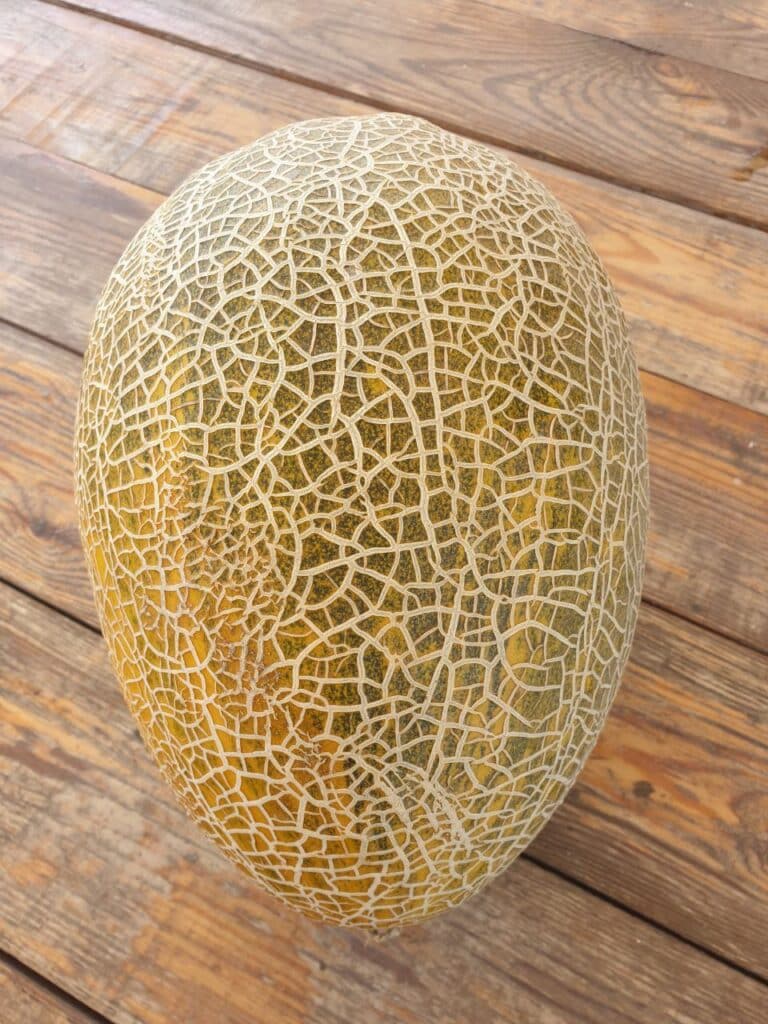
Sanat’s dream is for Khorezm melons to be exported abroad. His newly developed variety ripens late – in September–October – and is transport-resistant, maintaining its quality until the following spring.
As a breeder, he seeks to restore rare and lost Khorezm melon varieties. He believes that farmers and scientists should not only grow melons, but create new varieties as well. People need product variety.
«This will help solve food problems and support business. That’s why I want to become an academician,» he says.
The Untapped Potential of Melon Processing
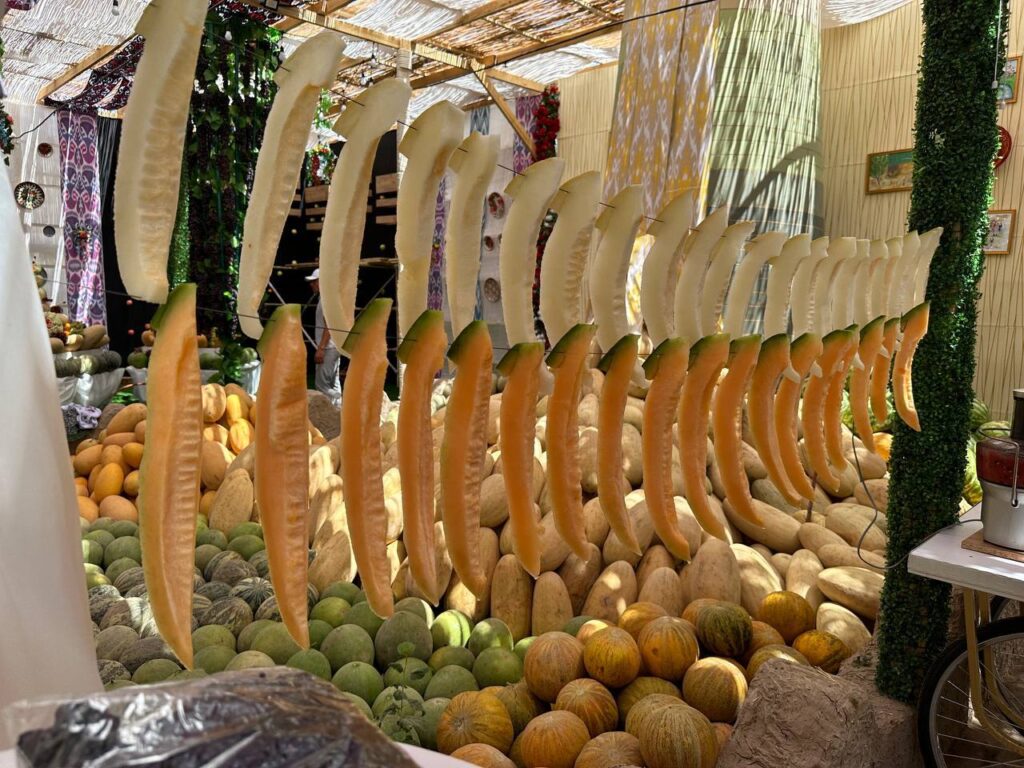
Unlike watermelon, melon is highly suitable for processing into a variety of products. In Uzbekistan, it is traditionally dried for winter – a sweet, nutritious preserve. Melon can also be used to make jam, preserves, juice and dessert sauces.
«I want to produce canned melon – like tinned pineapple. This would allow me to sell it both in Uzbekistan and abroad. I have a business plan, now I just need investments,» Sanat explains.
Some Statistics
Harvest:
From January to December 2024, Uzbekistan harvested 2.68 mln tonnes of melons and gourds.
Of these:
- Farmers produced over 1.5 mln tonnes
- Dehkan farms harvested around 1 mln tonnes of melons and watermelons
Exports:
From January to July 2024, Uzbekistan exported 24.3 thousand tonnes of melons, worth $10.8 mln.
Main importing countries:
- Kyrgyzstan – 7.2 thousand tonnes
- Kazakhstan – 6.2 thousand tonnes
- Russia – 5.9 thousand tonnes
- Latvia – 1.3 thousand tonnes
- Germany – 0.8 thousand tonnes
‘Kovun Sayli’ – The Melon Becomes a Tourism Brand
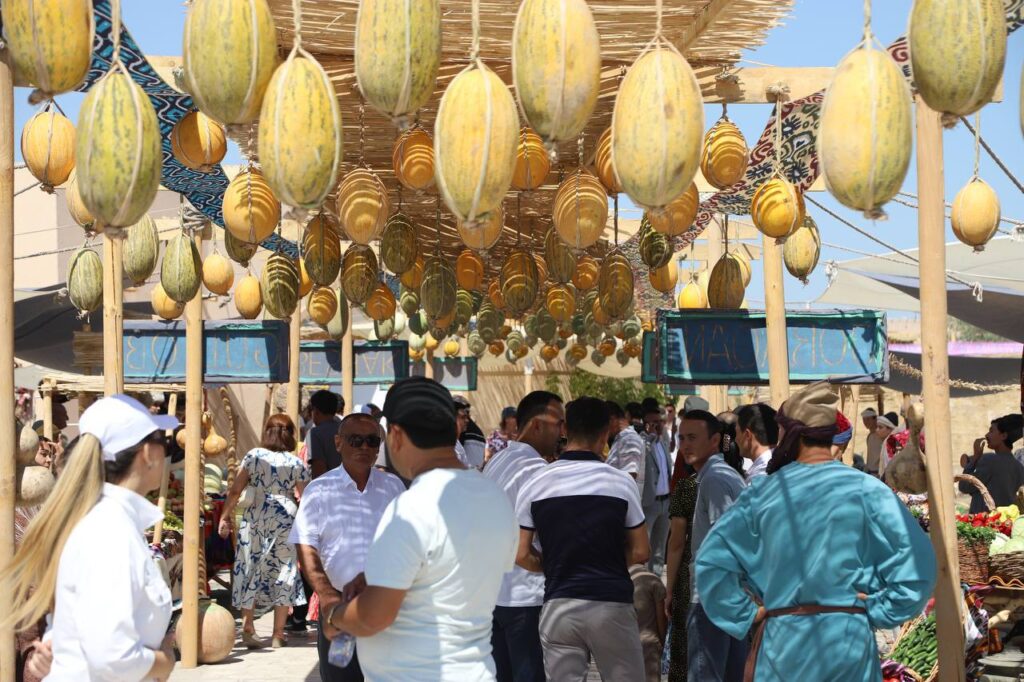
In Uzbekistan, the melon is more than just a fruit – it is part of the country’s cultural heritage. Since ancient times, the harvest has been celebrated with the vibrant Qovun Sayli – the melon festival.
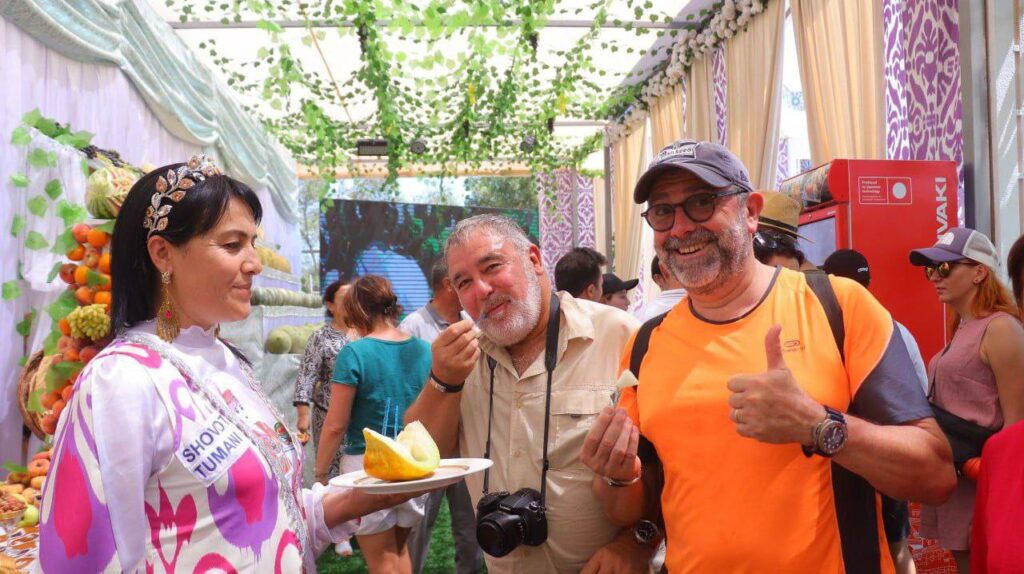
Today, traditions are being revived. Melon festivals are held in tourism hotspots such as Bukhara and Khiva, attracting guests from around the world.
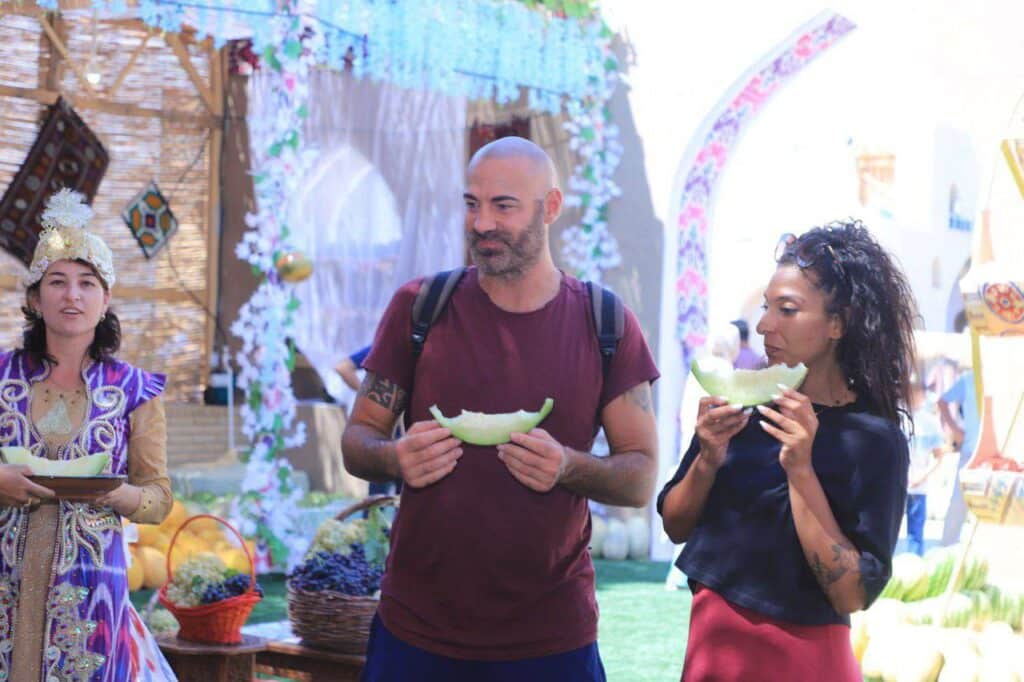
These events offer a chance to taste the finest varieties and experience the living culture of the region.
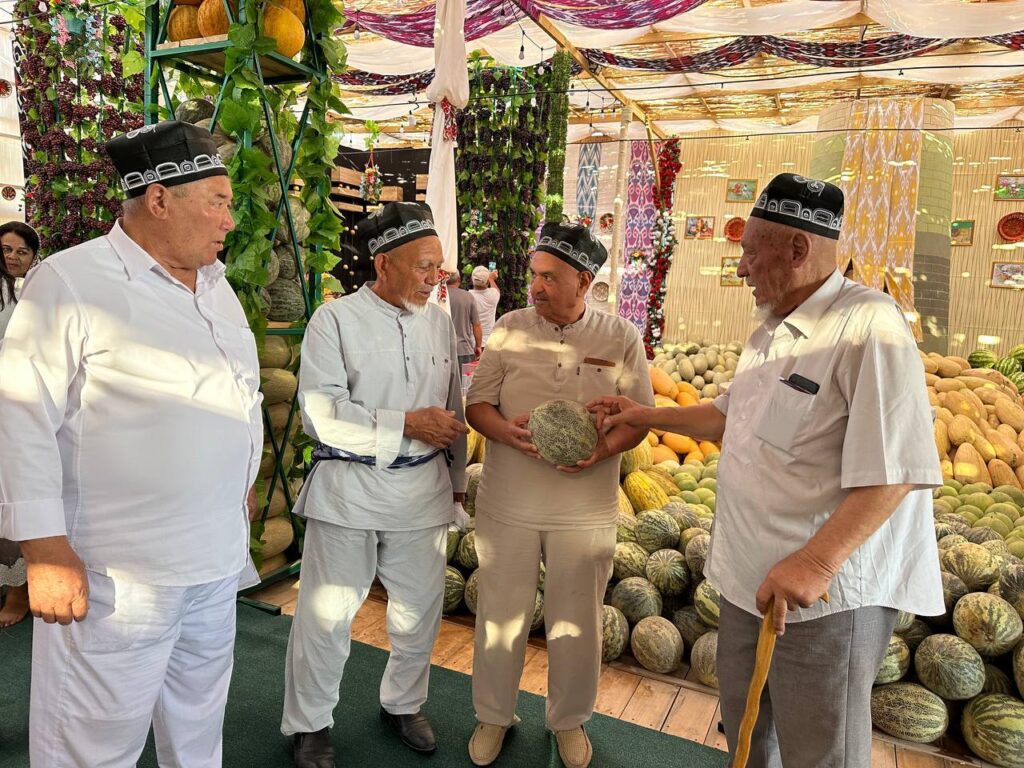
The story of Sanat Kalandarov shows how farming experience, when combined with science, can contribute to agricultural development. His approach helps promote a national product.
Today, the Khorezm melon is not only a harvest from the fields – it is also a step towards enhancing export potential and boosting the region’s appeal to tourists.

